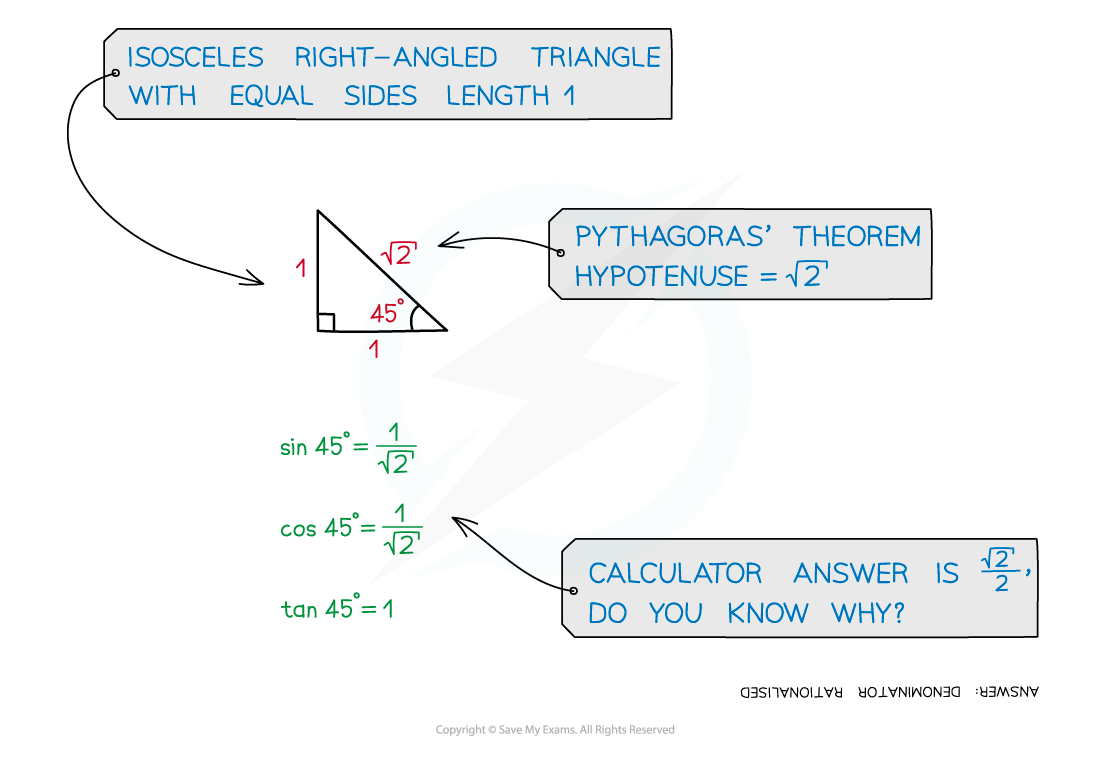Pythagoras
What is the Pythagorean theorem?
- Pythagoras’ theorem is a formula that works for right-angled triangles only
- It states that for any right-angled triangle, the square of the hypotenuse is equal to the sum of the squares of the two shorter sides
- The hypotenuse is the longest side in a right-angled triangle
- It will always be opposite the right angle
- If we label the hypotenuse c, and label the other two sides a and b, then Pythagoras’ theorem tells us that
- The hypotenuse is the longest side in a right-angled triangle
How can we use Pythagoras’ theorem?
- If you know two sides of any right-angled triangle you can use Pythagoras’ theorem to find the length of the third side
- Substitute the values you have into the formula and either solve or rearrange
- To find the length of the hypotenuse you can use:
- To find the length of one of the other sides you can use:
or
- Note that when finding the hypotenuse you should add inside the square root and when finding one of the other sides you should subtract inside the square root
- Always check your answer carefully to make sure that the hypotenuse is the longest side
- Note that Pythagoras’ theorem questions will rarely be standalone questions and will often be ‘hidden’ in other geometry questions
Exam Tip
- Pythagoras' theorem pops up in lots of exam questions so bear it in mind whenever you see a right-angled triangle in an exam question!
Worked example
Find an expression for the length , in terms of
.

Use Pythagoras' theorem to find the hypotenuse of the right-angled triangle on the lef
Simplify this value
Write out Pythagoras' theorem for the right-angled triangle on the right, using the length found above of 13 cm
Make y the subject by square-rooting both sides
(you cannot square root each individual term)
No is needed as y is a length (positive)









